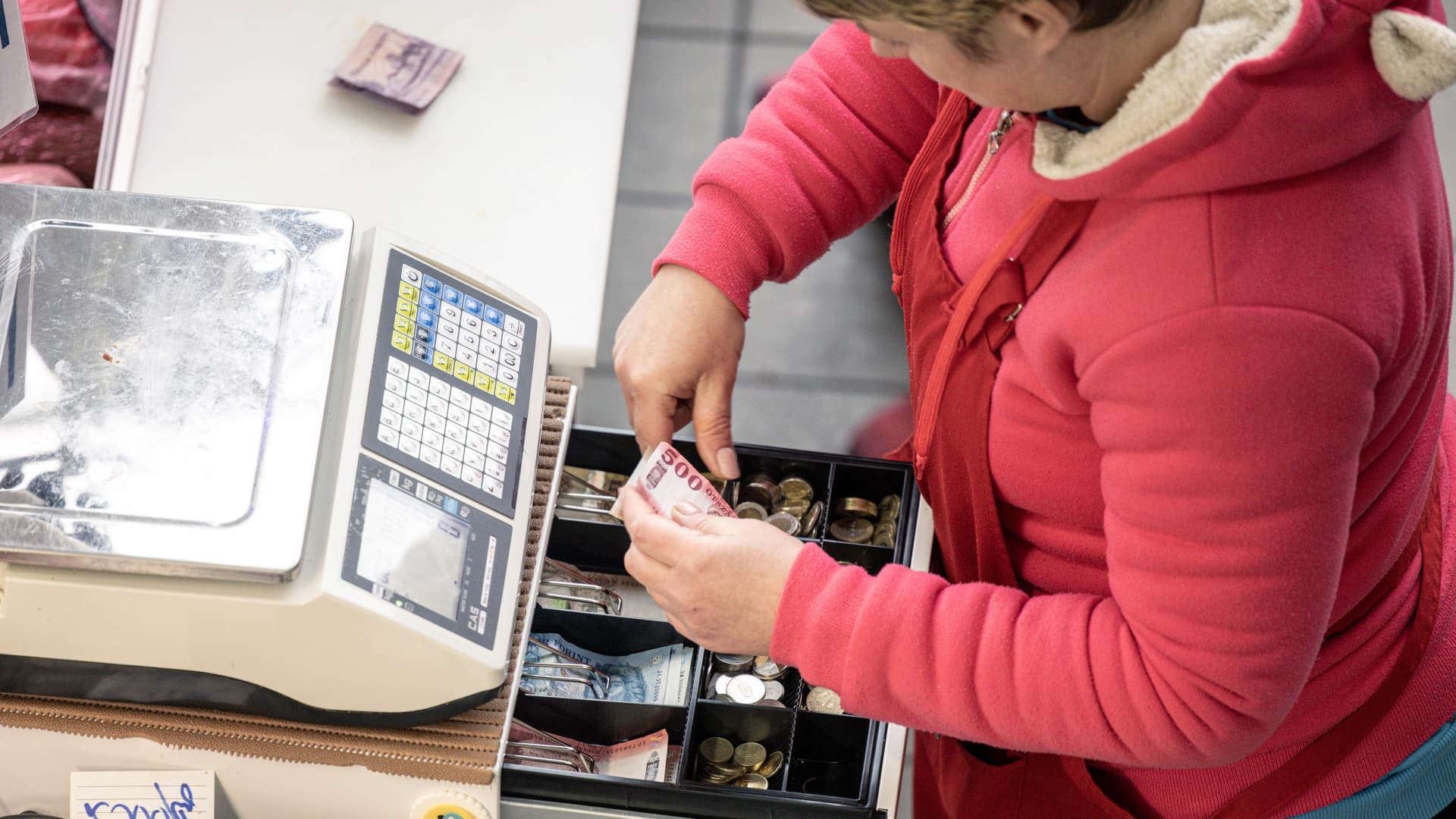Euro zone inflation rate slides to 9.2% as energy price surge cools

Inflation in Europe has been impacted by higher energy prices and supply shortages. Analysts question how far central banks will go to bring inflation under control.
Bloomberg | Bloomberg | Getty Images
Inflation in the euro zone dropped for a second consecutive month in December, but analysts do not expect it to spark a change in tone from the European Central Bank.
Headline inflation, which includes food and energy costs, came in at 9.2% year-on-year in December, according to preliminary data Friday from the European statistics agency, Eurostat. It follows November’s headline inflation rate of 10.1%, which represented the first slight contraction in prices since June 2021.
The euro area economy has come under immense pressure in the wake of Russia’s invasion of Ukraine in February 2022, with energy and food costs soaring last year. In an effort to battle rising prices, the European Central Bank increased interest rates four times in 2022 and said it is likely to continue doing so this year. The bank’s main rate currently sits at 2%.
Despite further signs that inflation is easing, analysts say it is too early to celebrate and do not expect a pivot from the region’s central bank.
Interest rates will “get to 3(%) and probably have to hold that all through the year even as the recession becomes more and more evident,” Hetal Mehta from Legal & General Investment Management told CNBC’s “Street Signs” Thursday.
It comes after ECB President Christine Lagarde struck a particularly hawkish tone in December: “We’re not pivoting, we’re not wavering, we are showing determination.” She added that the bank has “more ground to cover.”
The ECB cannot and will not base its policy decisions on highly volatile energy prices.
Carsten Brzeski
global head of macro, ING Germany
Speaking earlier this week, ECB Governing Council member and French Central Bank Governor Francois Villeroy de Galhau said interest rates might peak by this summer.
The ECB also said in December that it will start reducing its balance sheet in March at a pace of 15 billion euros ($15.8 billion) per month until the end of the second quarter. This step is also expected to address some of the region’s inflationary pressures.
At the time, the central bank forecast an average inflation rate of 8.4% for 2022, 6.3% for 2023 and 3.4% for 2024. The bank’s mandate is to work toward a headline inflation figure of 2%.
Earlier this week, data out of Germany showed inflation dropping from 10% in November to 8.6% in December.
Carsten Brzeski, global head of macro at ING Germany, said these numbers “are not a relief, yet, only a reminder that euro zone inflation is still mainly an energy price phenomenon.”
Energy costs have dropped in Europe in recent months. Natural gas prices, for instance, traded at around 72.42 euros per megawatt hour on Friday — sharply lower than their peak of 349.90 euros per megawatt hour in August.
Among inflation components, energy continued to represent the biggest driver in December, but came off from previous levels. Energy costs dropped from 34.9% in November to an estimated 25.7% in December, according to the latest figures.
“The ECB cannot and will not base its policy decisions on highly volatile energy prices. Instead, the central bank will, in our view, hike interest rates at the next two meetings by a total of 100 basis points,” Brzeski said in a note.
Claus Vistesen, chief euro zone economist at Pantheon Macroeconomics, also said in a note this week that he sees “little relief” in the inflation data, “which will keep the ECB on alert at the start of the year.” He expects two rate hikes of 50 basis points in the first quarter.
In terms of national breakdown, the Baltic nations once again registered the highest jumps in inflation, with a rate of about 20%.









